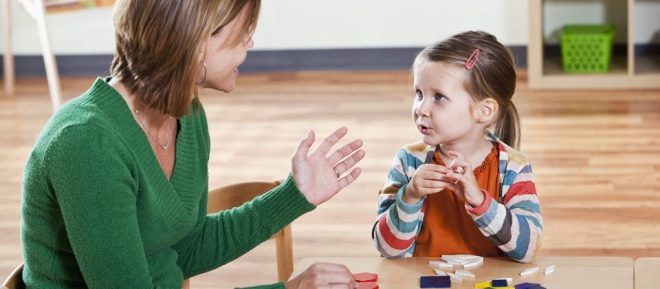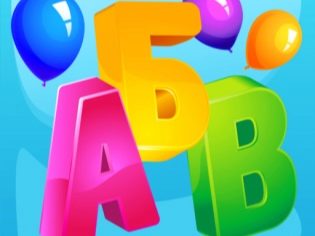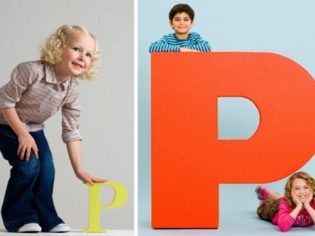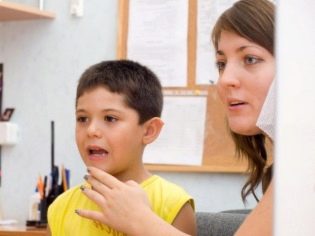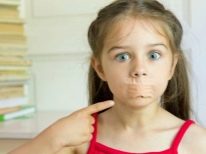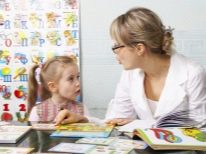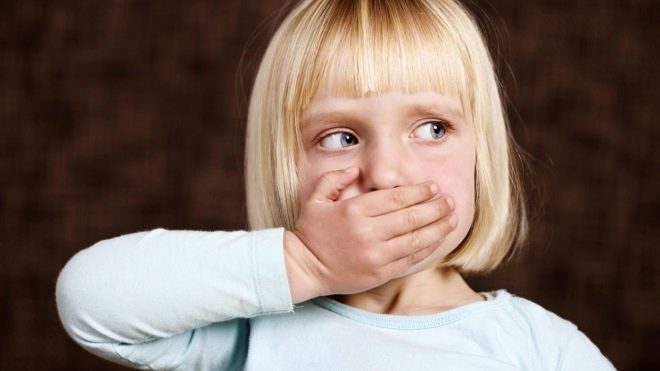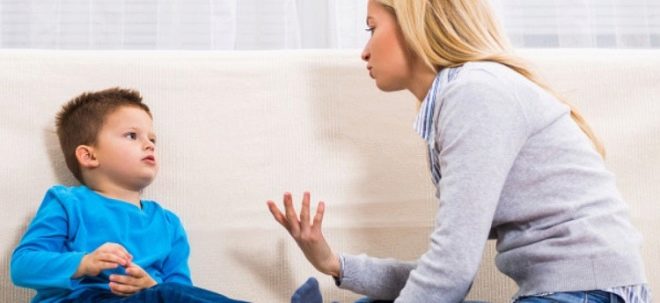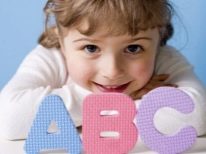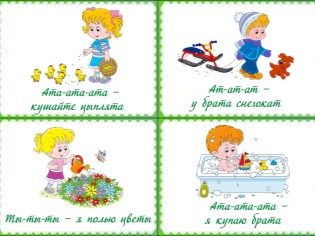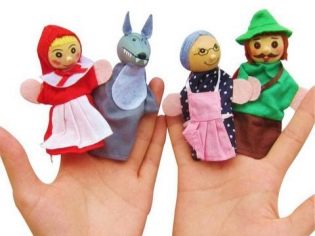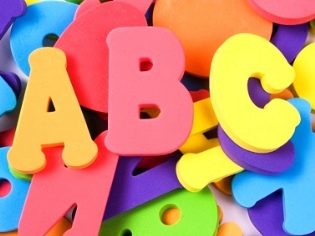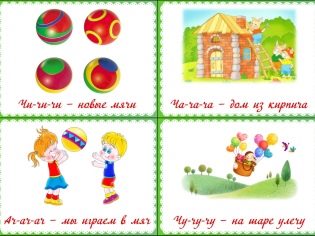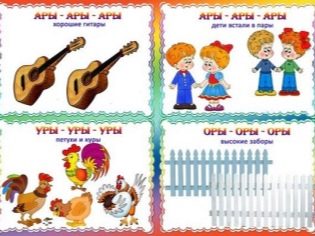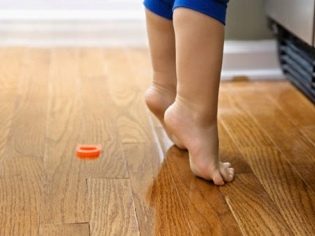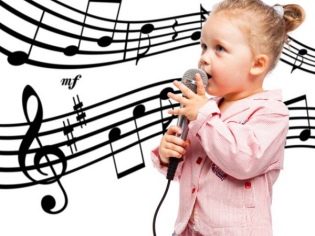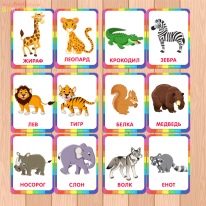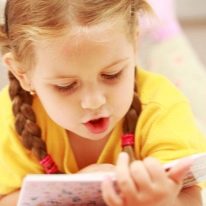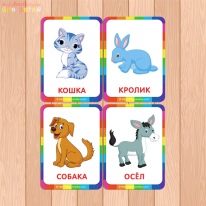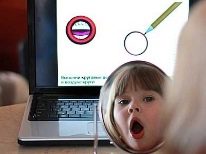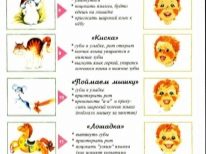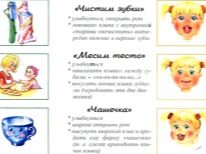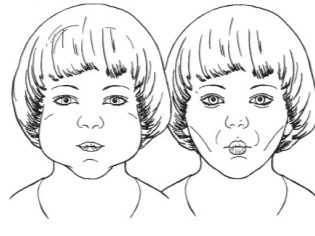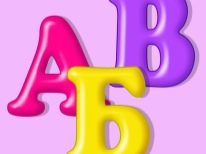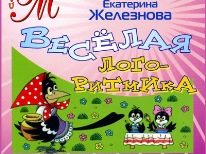Speech therapy classes for children 5-6 years old at home
The purity of the preschooler's speech is the key to his future student victories. It is no secret that children who have problems with the pronunciation of sounds, learn worse. In addition, they are more closed, because the communication, which they will have to go with their peers, takes away too much power.
To be understood, such children need to try, and therefore, in 5-6 years, complexes begin to form that can accompany a person for the rest of their lives. The parents can help the child themselves, at home.
In this material, we will present some of the most effective speech therapy classes and speech development techniques for children 5-6 years old.
Diagnosis of disorders - when the child needs help?
Quite often, parents who notice certain juggling of words and unclear pronunciation of their baby mistakenly believe that with age everything will work out by itself.
There is some truth in this - the speech apparatus of preschool-age children is imperfect, it is in the process of becoming. A number of problems with the pronunciation of sounds children really manage to “outgrow”. However, relying on it is irresponsible, especially since not all speech defects are corrected with age by themselves.
At the age of 5-6 years old, the child may experience various disorders that will require a different approach and the help of different specialists:
Dyslalia
With this violation, the child’s hearing is not disturbed, there are no pronounced problems with the speech apparatus, however incorrectly pronounces consonants.
Most often children confuse the sounds of “Ш”, “Ж”, “Л”, “Р”. A child can replace the sound in a word with a similar one (mountain-bark), it can even skip a sound, it can pronounce it incorrectly - to stun or ring.
Stuttering
At preschool age, such a defect occurs most often. It manifests itself in a halt with pronunciation and difficulty in further pronunciation.
The reasons that can cause stuttering are many - from neurological problems to psycho-emotional disorders. At the age of 5-6 years, the speech defect is very pronounced, it cannot be confused with anything else.
Abominableness
Such preschool children are said to be “Snuffles”. Sometimes it is quite difficult to understand exactly what the child is saying, since the pronunciation of “nose” distorts even the simple sounds of the native language.
Often the reason for such a defect lies in ENT pathologyfor example, nasal congestion due to adenoids. However, after treatment by an otolaryngologist, the child may continue to speak for a while out of habit “in the nose”. He needs developing speech therapy classes.
Underdevelopment of speech
In the normal development of a child at preschool age, there is no difficulty in drawing up sentences, even long ones, in which words are used in different cases and indentations.
When speech is underdeveloped, a child has difficulty “linking” individual words into a large logical chain, and there are problems with the endings of even well-known words. Often this is due to the fact that parents and older people when communicating with a child they themselves deliberately distorted words, used many diminutive suffixes (calyx, plate, boots), as well as "lisping".
Speech delay
Such a violation may be due to lack of communication with adults, lack of developmental communication, contact with peers, and may also be a consequence or symptom of neurological disorders, pathologies of the central nervous system.
In addition to home speech therapy classes, it is advisable for a child to visit a neurologist, a specialist in speech therapy, to participate in group classes.
Home classes on pronunciation of sounds
Occupations at home have some advantages compared to occupations at the speech therapist in the clinic. At home, the child is familiar and understandable; there is no need to be shy of strangers. In the form of a game, home classes give no less results than a correction in the office of a professional speech therapist.
Unfortunately, speech defects in the modern world occur in children more often than in their parents' childhood. The point is the abundance of information, which largely replaces the need for communication from children from a very young age.
Instead of playing with a friend or girlfriend on the playground, children prefer to spend their free time from the kindergarten on the Internet, playing with a tablet or computer, watching numerous cartoons on TV. All this does not contribute to the development of speech.
At home, parents can combine speech therapy classes with preparation for school. It is quite simple to do this; it is enough to combine the pronunciation of sounds and syllables with games that train the memory, memorizing rhymes and prose, learning new information about the world around the kid.
The development of fine motor skills in teaching drawing and writing also contributes to the improvement of the speech apparatus.
Classes at home are not only educational games and exercises for correcting speech defects, but also pleasant communication and interaction between the child and adults. It will undoubtedly benefit all participants in this process.
Exercises and games for speech development at home
Finger games will help to prepare the child’s pens for writing, and at the same time the finger games will help improve the performance of his speech apparatus. For them, you can use ready-made sets of finger characters - heroes of your favorite fairy tales.
You can compose on the go your own fairy tales and stories, and this will help your child develop more and fantasy. It is good if the presentation “on the fingers” will be accompanied by learned verses with elements of chistogovorok.
It is better to choose mouthpieces not only for a problem sound, which the child doesn’t really pronounce, but also for other complex sounds, too. For example, if a kid has problems with hissing or the sound “L”, it is worth choosing chanting words that will require the exact pronunciation of these sounds from the kid:
And we have a stir - the thistle has grown
To relieve a stir, weed the thistle!
If you have problems with the sound "C", such a chauffeur will do:
Su su su, su su su, so owl lives in the forest.
My sister and owl in the forest brought sausage.
Sa-sa-sa, sa-sa-sa, a wasp came to us,
A fox came to us, a dragonfly visited.
If you have problems with the pronunciation of the sound "P" will help this rhyme:
Ra-ra-ra, it's time for us to go home,
Ru-ru-ru, draw a kangaroo,
Ro-ro-ro, rain dripping into the bucket,
Ry-ry-ry, tigers leaping from the mountain.
You can write chatter sayings yourself, the main thing is to place the problematic sound at the beginning and end of a phrase so that it is not possible to replace it with a consonant other sound or omit it completely. It is not difficult at all.
The most successful example of a pure saying was known to our grandmothers and great-grandmothers. These are all familiar "Lyuli-Lyuli":
Lyuli-lyuli-lyuli, the ghouls flew in,
Gulyushki-ghouls, cute lapuli,
Oh luli-luli-luli, we wove a wreath for them.
An excellent speech therapy effect has many "popular" rhymes - "Geese-geese, ha-ha-ha" and others who are familiar to everyone since childhood.
You can build a class as follows:
- Rhythmic movements to the beat of a song or a finish.Invite the child to walk in a circle, walking solely in time with the poem. Then the steps can be changed to small jumps to the beat.
- Breathing exercises. After the active five-minute offer the preschooler to breathe deeply. In this case, he should breathe in through the nose, and exhale through the mouth in a thin stream.
- Emotional "coloring." After the breathing exercises, ask the child to repeat the concord with the emotional color. Let mimicry and gestures show a fox, an owl, a wasp, geese, etc. Help the child, create funny images that he will like to parody.
- Songs. Now you can sing the poems and chatter. If you cannot even put them on simple music, as our great-grandmothers did, singing at the cradle “Lyuli-lyuli-guli”, then you can specially learn a chipper-tongued song. Such songs can be found on numerous video lessons on speech therapy sessions on the Internet.
- The next stage can be finger games. Ask the child to speak the chapters or rhyme again and demonstrate its plot on the fingers (index and middle, placed on the pads, can depict a person walking, and sweeps of the folded cross-shaped palms show the fluttering of the wings of geese, etc.
- After the above exercises, you can proceed to a more relaxed pursuit - logical and cognitive. Lay out on the table in front of the preschooler pictures of animals and insects that were used in the poems. Ask to show and name those who have the sound “P” in the title (fish, cancer, crow), and then ask to show and name those whose names do not have “Z” (dog, owl, cat). This exercise will help your child learn reading faster.
- At the end of the class, ask the child to repeat the new poem and individual words for you. Do this several times, clearly, without forgetting to praise the child. The next lesson should start with this new, preschooler rhyme or chanting.
Gradually introduce into the turnover and the patters (“The cap is sewn not in kolpak, the bell is not in a bell”, “Sasha walked along the highway and sucked drying”, “Grass in the yard, firewood on the grass”, etc.).
Articulation Gymnastics and Pronunciation Training
Make a special gymnastics for the child's speech apparatus daily. With her best to start the next lesson. It will prepare the muscles, ligaments, tongue and lips for pronouncing difficult sounds for a preschooler.
Gymnastics is aimed at training the chewing, swallowing and facial muscles, they jointly participate in the process of pronunciation, make speech intelligible and understandable.
Not only lips and tongue, but also respiratory organs, chest, shoulders, vocal cords participate in the process of pronunciation. Consider this during gymnastics and try to use all the components of the vocation equally.
Gymnastics should be done while sitting, it is advisable to conduct 2-3 classes per day, while each should take no more than 5 minutes, during which time the child should perform 2-3 exercises from the complex.
Previously, parents will have to master all the exercises on their own in order to be able to show a preschooler and achieve a clear and clean performance. For the development of the lips, it is worth carrying out simple exercises, such as holding the lips in a smile, and the teeth should be completely closed.
You should start with 30 seconds and gradually keep a smile for 1-2 minutes. It also effectively develops the articulation of lip folding tube. The principle is the same - first, the tube from the lips should be kept for 20-30 seconds, but gradually the duration of the exercise increases.
It will be a little harder to fold the lips into a bagel, while the teeth are tightly closed, and the lips are pulled out by the straw, but opened, so you can see the teeth. Gradually, the tasks complicate and add movement, which should give mobility to the lips.Thus, the lips in the tubule can be moved in a circle, left and right, up and down, depicting the trunk of an elephant or piglet's nose.
Stretched lips, folded like a fish, close and open. So it turns out an entertaining conversation of fish at the bottom of the sea. And if you exhale through your mouth, forcing the lips to vibrate from the air flow, you get a very funny angry horse that snorts just like the real thing.
A very funny game in which the child needs to draw something in the air with a pencil between his lips will help strengthen the child’s lips. The task of an adult is to guess what the child portrayed.
To train your cheeks, you can play with balloons, puffing up your cheeks and keeping them in this state for as long as possible. In this case, you can make funny faces. If you inflate the right and then left cheek in turn, you will get a hamster, and if you pull both cheeks inside the mouth and hold them in that position, you will get a hungry and funny gopher.
You can practice your tongue by portraying a dog. To do this, stick out the tongue and relaxedly put on the lower lip. You can combine this exercise with short breaths and exhalations mouth. If you stick out the intense tip of the tongue, you can play mosquitoes, and moving the tongue up and down and left and right, as well as bending it into a tube, will help you not only to spend five minutes of free time with pleasure, but also to train the muscles of the tongue.
Training the jaw can be done with pleasure if the child with his mother tries to depict a monkey, maximally “hanging” the jaw down, or an angry lion, straining the lower jaw in a grin and making a characteristic growl.
Tips for parents
It is necessary to start home speech therapy classes only after the child has been examined by specialists - an ENT, a neurologist and a speech therapist. They will help to find the true causes of a speech defect and will suggest some techniques that will be aimed at eliminating a particular defect in a given child, given its anatomical and other features. Speech therapy examination will help establish in which part of the speech apparatus there is a clip or other obstacle.
Engage with the child should be daily. The baby should have the opportunity to constantly practice new movements and pronunciation. At first, the preschooler may complain of fatigue, because the correct formulation of the speech apparatus for him again. However, gradually it will become natural, everything will turn out without much effort, the normal formulation of the lips and tongue will become the norm.
Parents should initiate the start of classes only when the child is well rested, eaten, is in a good mood, ready to play and classes. Through force, through coercion, speech therapy classes are not conducted, since there will be little benefit from them if the child treats them as a service.
Mom and dad need to be patient, because the process of correcting speech defects is quite lengthy and painstaking.
Do not scold the child if he does not get something. But always achieve the exact execution of the exercise. To do this, you can help the kid - with your hands, a spatula, a teaspoon. The tongue and lips should be in the correct position.
Do not hesitate to ask the experts for advice. It is also advisable to get acquainted with the literature on speech therapy. For this age, you can recommend the book N. Teremkova "Speech therapy homework for children 5-7 years old", "Speech therapist lessons - games for the development of speech" E. Kosinova and "Fun logorhythmics" E. Zheleznova. If you want to help your child cope with a speech defect, it’s worth starting with reading these books.
In the next video you will find even more information about the development of speech in a child of 5-6 years.

